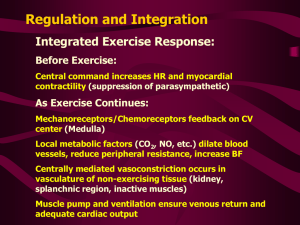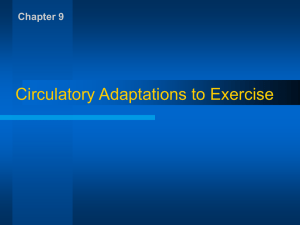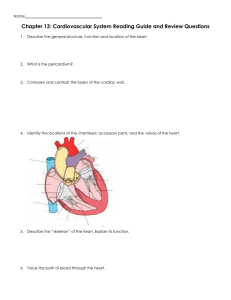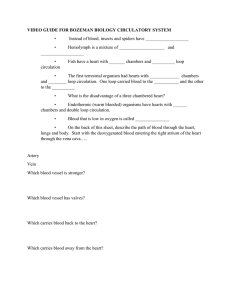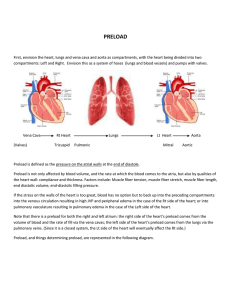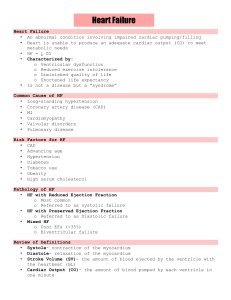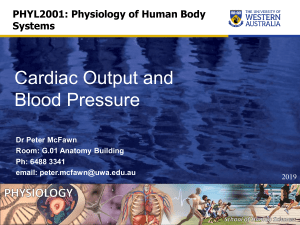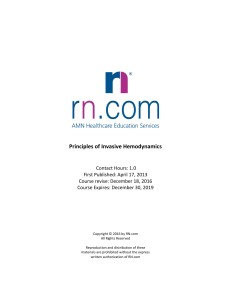Practicals- 2
advertisement
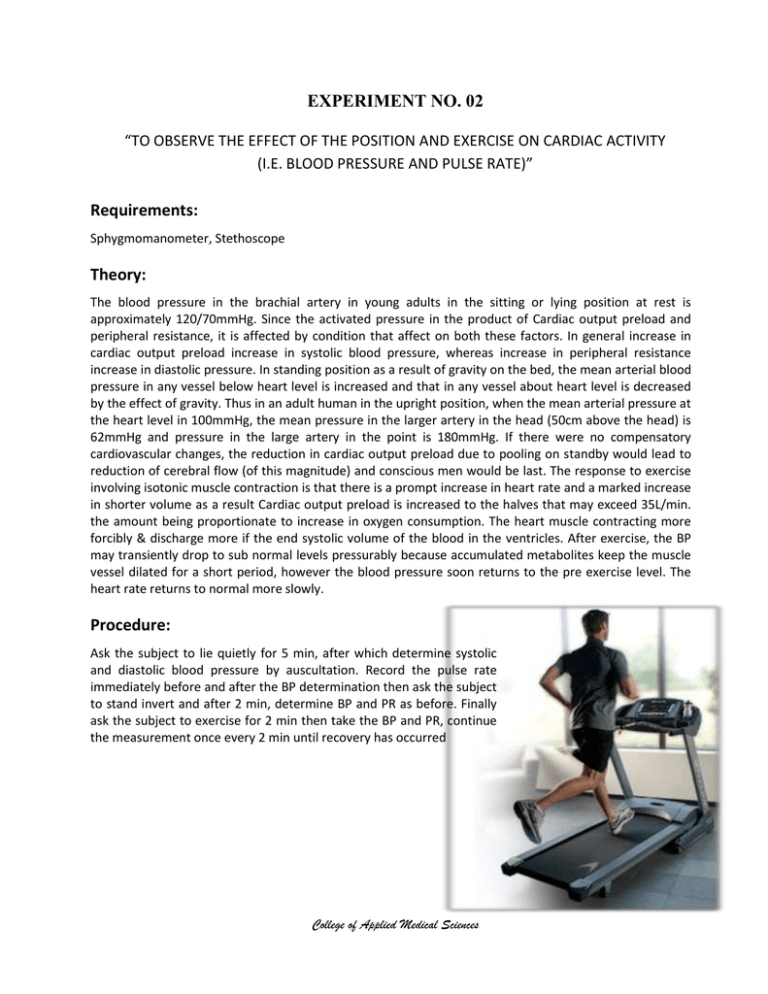
EXPERIMENT NO. 02 “TO OBSERVE THE EFFECT OF THE POSITION AND EXERCISE ON CARDIAC ACTIVITY (I.E. BLOOD PRESSURE AND PULSE RATE)” Requirements: Sphygmomanometer, Stethoscope Theory: The blood pressure in the brachial artery in young adults in the sitting or lying position at rest is approximately 120/70mmHg. Since the activated pressure in the product of Cardiac output preload and peripheral resistance, it is affected by condition that affect on both these factors. In general increase in cardiac output preload increase in systolic blood pressure, whereas increase in peripheral resistance increase in diastolic pressure. In standing position as a result of gravity on the bed, the mean arterial blood pressure in any vessel below heart level is increased and that in any vessel about heart level is decreased by the effect of gravity. Thus in an adult human in the upright position, when the mean arterial pressure at the heart level in 100mmHg, the mean pressure in the larger artery in the head (50cm above the head) is 62mmHg and pressure in the large artery in the point is 180mmHg. If there were no compensatory cardiovascular changes, the reduction in cardiac output preload due to pooling on standby would lead to reduction of cerebral flow (of this magnitude) and conscious men would be last. The response to exercise involving isotonic muscle contraction is that there is a prompt increase in heart rate and a marked increase in shorter volume as a result Cardiac output preload is increased to the halves that may exceed 35L/min. the amount being proportionate to increase in oxygen consumption. The heart muscle contracting more forcibly & discharge more if the end systolic volume of the blood in the ventricles. After exercise, the BP may transiently drop to sub normal levels pressurably because accumulated metabolites keep the muscle vessel dilated for a short period, however the blood pressure soon returns to the pre exercise level. The heart rate returns to normal more slowly. Procedure: Ask the subject to lie quietly for 5 min, after which determine systolic and diastolic blood pressure by auscultation. Record the pulse rate immediately before and after the BP determination then ask the subject to stand invert and after 2 min, determine BP and PR as before. Finally ask the subject to exercise for 2 min then take the BP and PR, continue the measurement once every 2 min until recovery has occurred College of Applied Medical Sciences Observation: Blood Pressure Before Exercise Pulse Rate After Exercise Before Exercise After Exercise Result: ___________________________________________ ___________________________________________ Sources of Error: ___________________________________________ ___________________________________________ Discussion: ___________________________________________ ___________________________________________ ___________________________________________ ___________________________________________ ___________________________________________ ___________________________________________ x---------------x---------------x College of Applied Medical Sciences

